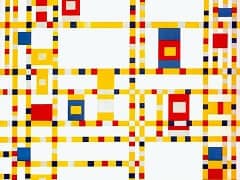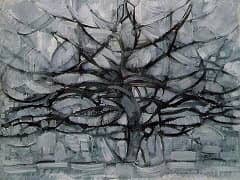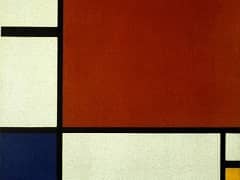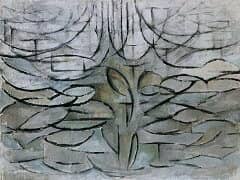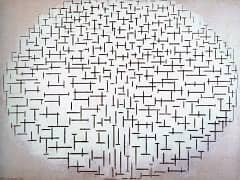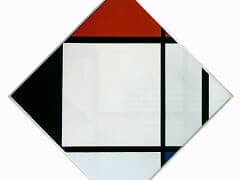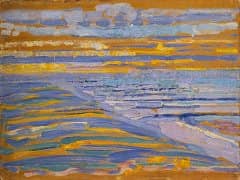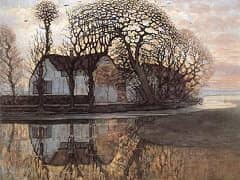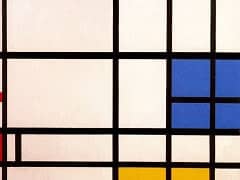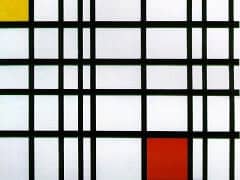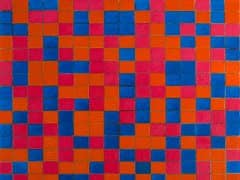Victory Boogie-Woogie, 1944 by Piet Mondrian
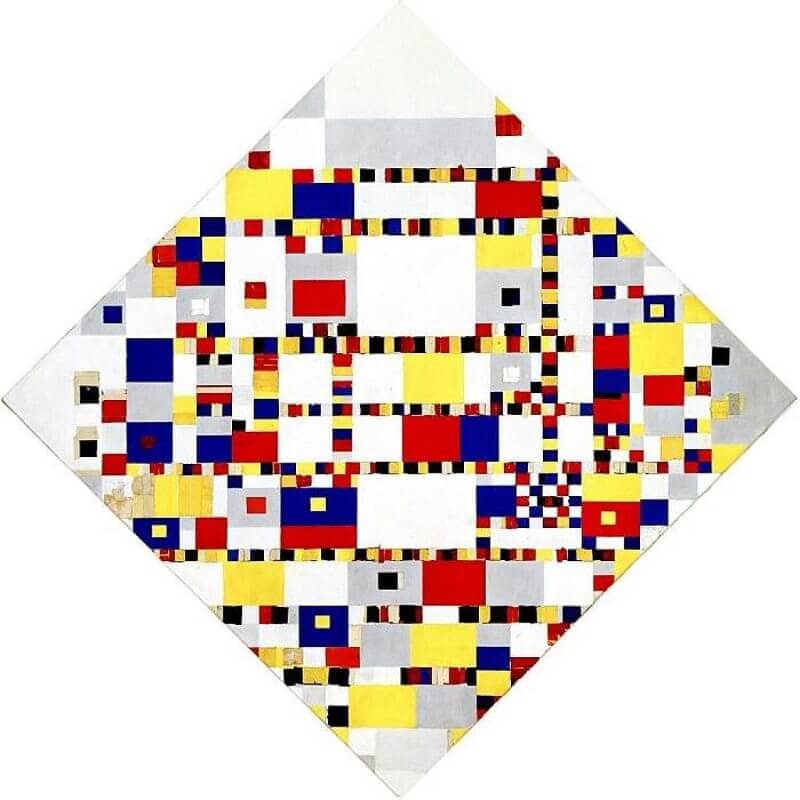
Victory Boogie-Woogie, a painting that Mondrian conceived in expectation of victory in World War II and that remained unfinished by reason of his death on February 1, 1944, adds immeasurably to the innovations of his American period. Even in its half-finished state, the painting shows an enormous enrichment over the 1943 drawing containing a first design for the work. It is remarkable to see how Mondrian, already over seventy, was capable of a liveliness, a receptivity to new impressions, a suppleness in dealing with his own approach - all sharply in contradiction to the reputation for dogmatism that surrounded him and that he had himself furthered in the years after 1925, in his dialectic controversy with Theo van Doesburg. Modrian was not doctrinaire in any sense of the term, but he did go constantly further on his own way, and the changes that took place in his work were not deviations from a dogmatic policy but consequences of the insights and experiences deriving from his eyes and his "thinking with his eyes," as Paul Cezanne put it. Victory Boogie-Woogie is a fascinating and convincing example of this development.
It may be a mistake to judge Victory Boogie-Woogie as an actual painting, since it is, quite literally, work in progress. Yet the picture as it stands reveals a number of innovations that go considerably beyond Broadway Boogie-Woogie. First of all, the strictly linear pattern that is so marked a characteristic of New York City I and that is still dominant in Broadway Boogie-Woogie is of far less importance here. Instead of a flowing movement, a syncopated movement now predominates; the beat of the measure dissolves into shifts of accent.
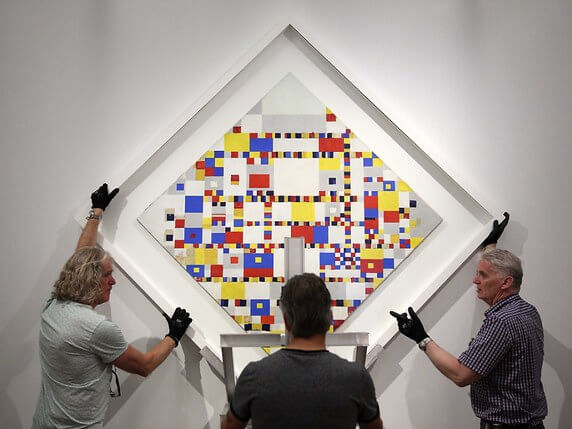
Many commentators on this painting have seen in it a reflection of New York, of the rhythmic swarming of the great city with its giant buildings and straight streets. This approach is as misleading as the attempt to see a reflection of the Dutch landscape in Mondrian's paintings of the twenties. Mondrian's Victory Boogie-Woogie seems to viewers to be not the reflection of something optically perceived but the depiction of a feeling for life, of a style of life: the joyous expectation, the sure hope of victory over tyranny, misrule, and personal glorification - a victory that Mondrian had been looking forward to since 1917. And it may also be symbolic that Victory Boogie-Woogie remained unfinished, as unfinished as the victory. In any event, it is the painting that ushers in the postwar evolution of art, with a younger generation now leading the way in the direction that Mondrian found the only one to take: Always further!

